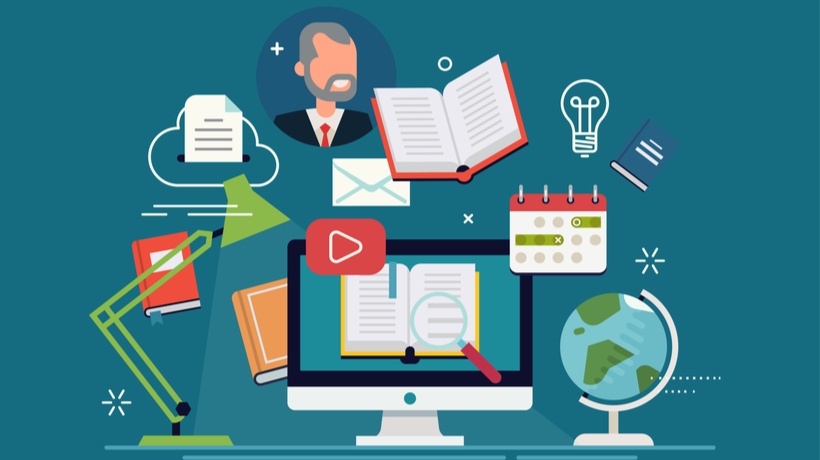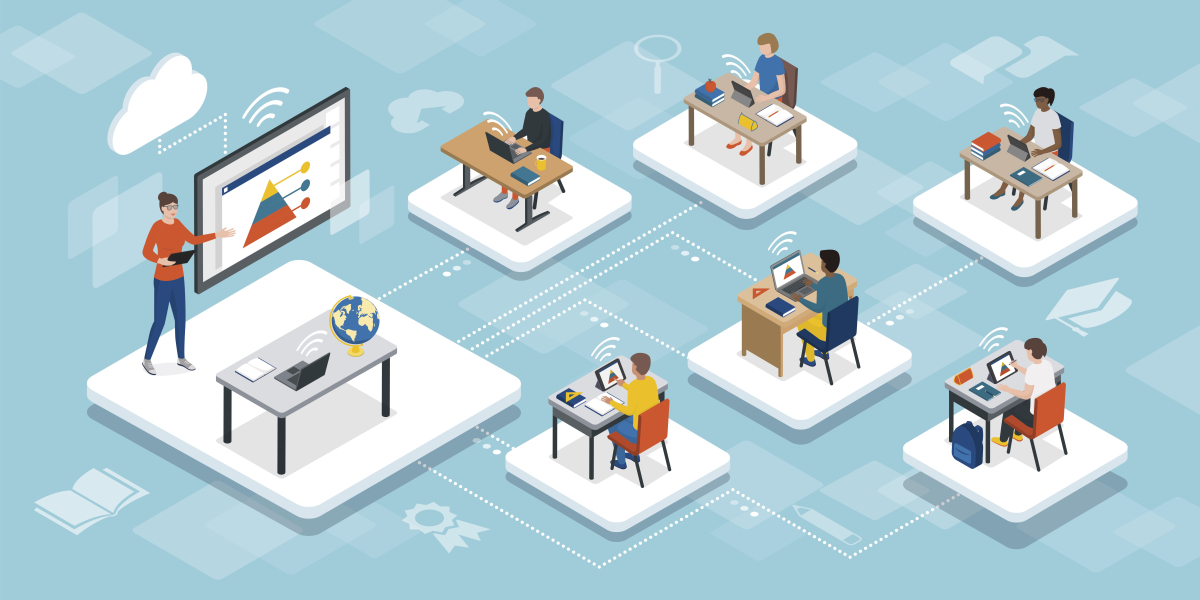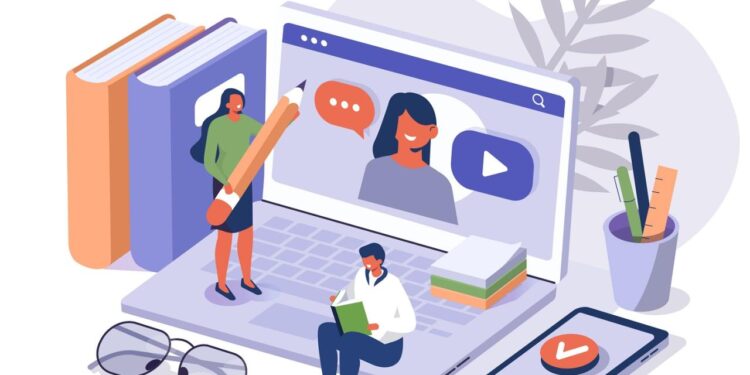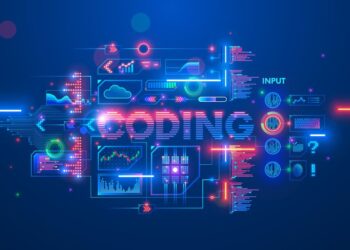The landscape of learning is undergoing a profound metamorphosis, driven by the pervasive integration of technology. Digital education isn’t merely an alternative to traditional schooling; it represents a revolutionary shift that transforms learning itself, making it more accessible, personalized, and engaging than ever before. For students, educators, and lifelong learners across the globe, digital tools and platforms are dismantling traditional barriers, offering unprecedented opportunities for knowledge acquisition, skill development, and collaborative exploration. Understanding this paradigm shift, its multifaceted dimensions, and its far-reaching implications is fundamental to navigating the future of human development in the 21st century.
The Digital Renaissance in Education

For centuries, education largely adhered to a fixed model: a teacher disseminating information to students in a physical classroom. While effective in its time, this model often struggled with scalability, personalization, and adaptability. The advent of digital technologies has ushered in a true renaissance, fundamentally reimagining how, when, and where learning occurs.
A. From Classrooms to Global Learning Spaces
The evolution of digital education has been rapid, moving from supplementary tools to central pillars of the learning experience.
- Early Innovations: The journey began with basic educational software and the internet as a research tool. Computer labs and early e-learning platforms offered limited, structured digital interactions.
- The World Wide Web’s Impact: The proliferation of the internet made vast amounts of information accessible, laying the groundwork for online courses and digital libraries.
- Mobile Learning Revolution: Smartphones and tablets put learning resources directly into the hands of students, enabling “anytime, anywhere” learning and blurring the lines between formal and informal education.
- The Pandemic’s Acceleration: The global COVID-19 pandemic acted as an unprecedented catalyst, forcing rapid adoption of remote learning solutions worldwide and demonstrating both the capabilities and challenges of fully digital education.
- Immersive Technologies: Virtual Reality (VR), Augmented Reality (AR), and the emerging metaverse are pushing digital education into new dimensions, offering immersive simulations, virtual field trips, and interactive learning environments that were once the stuff of science fiction. Imagine dissecting a virtual frog in biology class or exploring ancient Rome through a VR headset.
B. The Diverse Spectrum of Digital Learning
“Digital education” is not a monolithic concept. It encompasses a wide array of approaches, each offering unique benefits and catering to different learning needs.
- Online Courses and MOOCs: Massive Open Online Courses (MOOCs) from platforms like Coursera, edX, and Khan Academy have democratized access to university-level education and specialized skills training from top institutions globally, often for free or at a low cost.
- Blended Learning: This hybrid approach combines traditional face-to-face instruction with online learning components. Students might attend lectures in person but complete assignments, collaborate on projects, and access resources through a digital learning management system (LMS).
- Flipped Classrooms: In this model, students learn new content online (e.g., via video lectures) before class, and then use class time for active problem-solving, discussions, and project-based work with teacher guidance.
- Gamification: Integrating game-like elements (points, badges, leaderboards) and game design principles into non-game contexts to enhance engagement and motivation in learning.
- Personalized Learning Platforms: AI-powered systems that adapt content, pace, and teaching methods to each individual student’s needs, strengths, and weaknesses, providing truly tailored educational experiences.
- Virtual Laboratories and Simulations: Digital environments that allow students to conduct experiments, practice procedures, and explore complex systems without the need for expensive physical equipment or risk.
The Transformative Power
Digital education isn’t just about digitizing old methods; it fundamentally changes the very experience of learning, making it more dynamic and adaptable to individual needs.
A. Enhanced Accessibility and Inclusivity
Digital education has the power to break down geographical, economic, and physical barriers, making learning accessible to a much wider population.
- Global Reach: Students from remote areas or developing countries can access world-class education that would otherwise be out of reach, bridging educational disparities.
- Flexibility and Self-Pacing: Learners can access materials and complete assignments at their own pace and schedule, accommodating diverse lifestyles, work commitments, and learning speeds. This is particularly beneficial for adult learners, those with part-time jobs, or students with varying learning abilities.
- Inclusive Learning Environments: Digital tools offer adaptive technologies (e.g., screen readers, captioning, voice-to-text), alternative formats, and customizable interfaces, making education more accessible for students with disabilities and diverse learning styles.
- Reduced Costs: Online courses often have lower tuition fees compared to traditional university programs, making higher education more affordable. Eliminating commuting costs, accommodation expenses, and physical textbooks further reduces financial burdens.
B. Personalization and Adaptive Learning
One of the most profound impacts of digital education is its capacity for truly personalized learning experiences.
- Tailored Content Delivery: AI-powered algorithms can analyze a student’s performance, identify knowledge gaps, and then provide customized content, exercises, and remediation, ensuring that instruction is precisely aligned with individual needs.
- Immediate Feedback: Digital platforms can offer instant feedback on quizzes, assignments, and practice problems, allowing students to correct misconceptions immediately and reinforce learning effectively.
- Learning Analytics: Data collected from digital learning platforms provides valuable insights into student performance, engagement, and learning patterns. This data empowers educators to identify struggling students, optimize teaching strategies, and personalize interventions.
- Student-Centric Approach: The flexibility and personalization inherent in digital education shift the focus from a teacher-led, standardized approach to one that is student-driven, empowering learners to take ownership of their educational journey.
C. Fostering Engagement and Creativity
Beyond traditional text and lectures, digital education offers dynamic tools that captivate learners and unleash their creative potential.
- Interactive Content: Videos, simulations, virtual labs, interactive quizzes, and gamified elements make learning more engaging, memorable, and enjoyable than passive reading or listening.
- Multimedia Richness: Digital platforms can incorporate diverse media types—high-quality videos, animations, podcasts, interactive graphics—to explain complex concepts in multiple formats, catering to different learning preferences.
- Collaborative Tools: Online forums, discussion boards, video conferencing, and shared document platforms facilitate peer-to-peer learning, group projects, and real-time collaboration, mirroring skills needed in the modern workforce.
- Creative Expression: Digital tools empower students to create their own content—digital presentations, videos, podcasts, websites, code—allowing for deeper understanding and more authentic demonstrations of knowledge.
Challenges and Considerations

While the promise of digital education is immense, its widespread adoption also brings significant challenges that require thoughtful strategies and continuous adaptation.
A. The Persistent Digital Divide
Despite technological advancements, equitable access to digital education remains a significant hurdle.
- Access to Connectivity and Devices: Millions worldwide, particularly in rural areas and developing countries, lack reliable internet access or the necessary devices (computers, tablets) to participate fully in digital learning. This exacerbates existing educational inequalities.
- Socioeconomic Disparities: The cost of devices, internet subscriptions, and premium educational software can be prohibitive for low-income families, creating a two-tiered system of education.
- Digital Literacy Gaps: Even with access, many students and educators lack the foundational digital literacy skills needed to effectively navigate online learning environments, use complex software, or discern credible information.
- Teacher Training: Many educators, especially older generations, require substantial training and ongoing professional development to effectively integrate digital tools, manage online classrooms, and leverage learning technologies.
B. Pedagogy and Engagement Concerns
Simply putting content online doesn’t guarantee effective learning. Digital education requires new pedagogical approaches.
- Maintaining Engagement and Motivation: Without the direct physical presence of a teacher or peers, some students may struggle with self-motivation and engagement in online environments, leading to higher dropout rates in purely online courses.
- Screen Fatigue and Well-being: Prolonged screen time can lead to digital eye strain, headaches, and general fatigue. Balancing screen time with physical activity and offline interactions is crucial for student well-being.
- Authentic Assessment: Designing effective assessment methods for online learning that truly measure understanding and prevent cheating can be challenging, requiring innovative approaches.
- Social Isolation: While online platforms foster connection, they can sometimes limit opportunities for spontaneous, in-person social interaction, which is vital for holistic social-emotional development, especially for younger learners.
- Distractions: The internet, while a learning resource, is also a vast source of distractions, making it difficult for students to focus during online learning sessions.
C. Ethical and Security Implications
The reliance on digital platforms introduces new ethical and security concerns that must be addressed proactively.
- Data Privacy and Security: Educational platforms collect vast amounts of student data (performance, behavior, personal information). Ensuring robust data protection, adherence to privacy regulations (like GDPR, FERPA), and preventing cyberattacks is paramount.
- Algorithmic Bias: AI-powered learning tools are trained on data, which can reflect existing societal biases. If not carefully designed, these algorithms could inadvertently perpetuate stereotypes or disadvantage certain student groups.
- Misinformation and Disinformation: Students are exposed to a vast amount of information online, not all of it accurate. Developing critical thinking and media literacy skills to discern credible sources is more important than ever.
- Digital Equity: Ensuring that personalized learning doesn’t inadvertently create silos or unequal access to high-quality resources based on algorithmic assumptions.
A Holistic Approach to Digital Education
Maximizing the transformative potential of digital education requires a collaborative and strategic approach involving governments, educational institutions, the technology industry, and parents.
A. Strategic Investment in Infrastructure and Access
Bridging the digital divide must be a global priority to ensure equitable access to digital learning opportunities.
- Universal Broadband Access: Governments must invest in expanding high-speed, affordable internet access to all communities, rural and urban alike.
- Device Accessibility: Programs that provide affordable or subsidized devices (laptops, tablets) to students from low-income households are essential.
- Public Access Points: Libraries, community centers, and schools should continue to serve as vital hubs for free internet access and digital literacy training.
B. Modernizing Curricula and Pedagogy
Educational systems must adapt their content and teaching methods to effectively leverage digital tools.
- Digital Literacy as a Core Skill: Embed comprehensive digital literacy, digital citizenship, and media literacy into curricula from primary school onward, teaching students to be safe, ethical, and discerning digital citizens.
- Teacher Professional Development: Invest heavily in ongoing training for educators to equip them with the skills to design engaging online lessons, use learning management systems effectively, leverage AI tools, and manage blended learning environments.
- Focus on 21st-Century Skills: Shift emphasis towards critical thinking, problem-solving, collaboration, creativity, and adaptability – skills that are augmented by digital tools and crucial for future careers.
- Hybrid Models (The “New Normal”): Embrace blended learning and hybrid models that strategically combine the best of online and in-person instruction, maximizing flexibility and engagement while preserving crucial social interaction.
C. Responsible Technology Development
The tech industry has a vital role in designing educational tools that are effective, ethical, and safe.
- “Education by Design” and User-Centricity: Develop platforms and tools specifically designed for learning, with intuitive interfaces, age-appropriate content, and features that prioritize well-being over addiction.
- Privacy and Security by Default: Implement robust data privacy protections and cybersecurity measures to safeguard student data. Transparency about data collection and usage is paramount.
- Bias Mitigation in AI: Invest in identifying and reducing algorithmic bias in AI-powered learning tools to ensure fair and equitable educational outcomes for all students.
- Interoperability and Open Standards: Promote interoperability between different educational technologies to create seamless learning ecosystems and avoid vendor lock-in.
D. Empowering Learners and Families
Individuals and families play a crucial role in fostering positive digital learning habits.
- Parental Engagement: Encourage parents to be actively involved in their children’s digital learning journey, understanding the platforms they use, discussing online safety, and setting healthy boundaries for screen time.
- Self-Regulation Skills: Teach students self-discipline, time management, and the importance of taking breaks from screens to maintain focus and well-being.
- Lifelong Learning Mindset: Foster a continuous learning mindset, encouraging individuals to embrace new technologies and upskill throughout their careers.
- Promote Offline Balance: Emphasize the importance of physical activity, outdoor play, face-to-face social interactions, and creative hobbies that do not involve screens for holistic development.
Conclusion
Digital education is not a fleeting trend but a fundamental shift that is irrevocably transforming the landscape of learning. Its capacity to deliver personalized, accessible, and engaging educational experiences holds immense promise for empowering individuals and shaping a more knowledgeable global society. While significant challenges persist, particularly concerning equitable access and responsible implementation, the collective efforts of governments, educators, tech innovators, and families can forge a future where digital tools truly serve as catalysts for human potential.
The journey of digital education is continuous, characterized by ongoing innovation, adaptation, and a deep commitment to putting the learner at the center. By embracing these changes thoughtfully and strategically, we can unlock a new era of education, ensuring that learning is a lifelong, inclusive, and deeply transformative experience for generations to come. The classroom of tomorrow is not just a physical space; it’s an expansive digital horizon, ready to be explored.






Discussion about this post